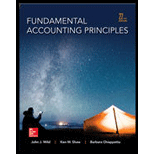
Concept explainers
Concept Introduction:
Sales variance is the difference between budgeted sales and actual sales. Sales variance can be because of two reasons
• Actual selling price of the product varies from the budgeted selling price and/or
• Actual quantity of sales varies from the budgeted quantity.
Therefore, sales variance is the sum of (i) Sales Price Variance and (ii) Sales Volume Variance.
Sales Price Variance:The difference between the actual selling price and the budgeted selling price is the Sales Price Variance.
Sales Volume Variance:The difference between actual quantity of sales and budgeted quantity is the Sales Volume Variance.
The following formulas are used to calculate Sales variance:
SalesVariance=Sales Price Variance+ Sales Volume Variance
Also Sales Variance = Budgeted Sales – Actual Sales
Sales Price Variance = Actual Sales - Actual quantity of Sales at budgeted price
Sales Volume Variance = Actual quantity at budgeted price -Budgeted quantity at budgeted price
Sales variance gives a view of deviations from the set standards which can be wither favorable or unfavorable
To Determine: Sales Price and Volume Variance
Want to see the full answer?
Check out a sample textbook solution
Chapter 23 Solutions
Fundamental Accounting Principles -Hardcover
- Valor Systems is considering a project that will produce incremental annual sales of $320,000 and increase cash expenses by $205,000. If the project is implemented, taxes will increase from $31,000 to $37,000. The company is debt-free. What is the amount of the operating cash flow using the top-down approach? Need helparrow_forwardanswer this without using Chatgtp or AIarrow_forwardI am looking for help with this general accounting question using proper accounting standards.arrow_forward
- Ai answer will get unhelpful ratearrow_forwardHii! Please don't use ai to answerarrow_forwardSimba Pets uses the perpetual inventory system. At the beginning of the quarter, Simba Pets has $42,000 in inventory. During the quarter, the company purchased $9,200 of new inventory from a vendor, returned $1,500 of inventory to the vendor, and took advantage of discounts from the vendor of $300. At the end of the quarter, the balance in inventory is $34,500. What is the cost of goods sold? A. $15,500 B. $14,900 C. $13,500 D. $16,200arrow_forward

 AccountingAccountingISBN:9781337272094Author:WARREN, Carl S., Reeve, James M., Duchac, Jonathan E.Publisher:Cengage Learning,
AccountingAccountingISBN:9781337272094Author:WARREN, Carl S., Reeve, James M., Duchac, Jonathan E.Publisher:Cengage Learning, Accounting Information SystemsAccountingISBN:9781337619202Author:Hall, James A.Publisher:Cengage Learning,
Accounting Information SystemsAccountingISBN:9781337619202Author:Hall, James A.Publisher:Cengage Learning, Horngren's Cost Accounting: A Managerial Emphasis...AccountingISBN:9780134475585Author:Srikant M. Datar, Madhav V. RajanPublisher:PEARSON
Horngren's Cost Accounting: A Managerial Emphasis...AccountingISBN:9780134475585Author:Srikant M. Datar, Madhav V. RajanPublisher:PEARSON Intermediate AccountingAccountingISBN:9781259722660Author:J. David Spiceland, Mark W. Nelson, Wayne M ThomasPublisher:McGraw-Hill Education
Intermediate AccountingAccountingISBN:9781259722660Author:J. David Spiceland, Mark W. Nelson, Wayne M ThomasPublisher:McGraw-Hill Education Financial and Managerial AccountingAccountingISBN:9781259726705Author:John J Wild, Ken W. Shaw, Barbara Chiappetta Fundamental Accounting PrinciplesPublisher:McGraw-Hill Education
Financial and Managerial AccountingAccountingISBN:9781259726705Author:John J Wild, Ken W. Shaw, Barbara Chiappetta Fundamental Accounting PrinciplesPublisher:McGraw-Hill Education





